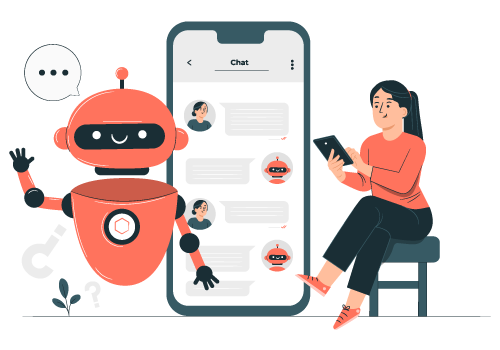Customers increasingly expect rapid and personalized interactions. Therefore, businesses must step up their efforts to match these demands. Implementing a customer engagement automation plan allows companies to better attract, engage, and retain their consumers.
Customer engagement automation is a holistic approach to keep people interested throughout the entire customer journey. This technique seeks to constantly and successfully attract customers’ attention by providing proactive support and reducing companies’ manual efforts.
This article will look at what customer engagement automation is, its importance, benefits, types, examples, and ways to implement it.
What Is Customer Engagement Automation?
Customer engagement automation (CEA) uses artificial intelligence (AI) and automation techniques to improve customer interactions and relationships by personalizing experiences, responding quickly, and ensuring constant engagement across the customer journey.
Customer engagement automation strategically combines technology to improve business-to-consumer relationships. It oversees all interactions throughout a product’s lifespan, with the goal of maximizing customer value while cultivating a long-term relationship with the organization.
This method uses automated features like chatbots, routing rules, and autogenerated article ideas to quicken repetitive operations and processes. Businesses that automate these interactions can more efficiently deliver timely support and personalized help, establishing strong and long-lasting client relationships.
Implement a comprehensive customer engagement automation plan to fulfil the growing need for timely and tailored customer interactions. Use data-driven insights to personalize experiences, automate repetitive operations, and provide quick help, increasing customer satisfaction and loyalty.
What Are The Benefits of Customer Engagement Automation?
Customer engagement automation has a number of advantages, including streamlining activities and increasing productivity.

1. Improved Personalization
Customer engagement automation allows organizations to leverage data to personalize experiences based on customer preferences, behavior, and previous interactions. For example, personalized product recommendations can be made based on browsing history and past purchases.
2. Increased Efficiency
Automation of engagement procedures improves operational efficiency by streamlining daily duties. This allows organizations to focus on areas that need to be improved while also lowering expenses by eliminating superfluous labor.
3. Enhanced Customer Experience
Automation enhances customer experiences by enabling real-time interactions, giving 24/7 assistance, answering questions, and providing relevant information, hence increasing customer satisfaction and brand loyalty.
4. Valuable Insights
Automation offers valuable insights into customer behavior by recording and analyzing data using customer feedback. It lets organizations uncover patterns and trends to influence product development and marketing strategies, keep ahead of competitors, and better understand customer wants.
5. Scalability & Flexibility
Automated engagement enables organizations to grow their efforts efficiently. As companies grow, automation makes it easier to maintain personalized involvement, resulting in quality interactions with a vast client base.
Customizable automation systems enable firms to adjust their engagement methods as client needs change.
6. Accurate Targeting
Automated solutions enable companies to target specific client segments based on demographics and behavior, hence increasing ROI and sales by sending the correct messages to the right customers.
7. Data Management & Enhanced Brand Image
Automating data collection and management improves efficiency in marketing, sales, product development, and customer support.
Providing tailored encounters through automation boosts brand recognition and sets the company apart from the competition
8. Compliance
Automated systems simplify compliance processes, lowering the chance of fines and legal concerns. Automated systems decrease human mistakes, track interactions for auditing purposes, and enable quick responses to compliance issues. This improves data accuracy, preserves document integrity, and guarantees that regulatory requirements are routinely met, lowering the risk of noncompliance penalties.
What Are The Different Types Of Customer Engagement Tools?
Businesses can automate customer engagement by combining different solutions from several vendors or by implementing an all-in-one marketing automation software.
The choice between these solutions is determined by a number of criteria, including your company’s size, needs, resources, and strategic objectives. Consider the following.
Individual Tools: Allows you to choose and invest in certain tools based on your needs, but it may bring integration issues.
Comprehensive Customer Engagement Solutions: Provide a seamless integrated environment, but you may be locked into the platform and suffer expenditures for items you do not require.
Individual tools
Several marketing automation tools can automate various areas of client engagement, such as:
1. Chatbots
Handle consumer inquiries across many channels, respond quickly, and maintain constant engagement.
2. Email Marketing Tools
Automate email communications, including welcome letters, promotional content, and personalized recommendations. Examples include Mailchimp, Constant Contact, and Salesloft.
3. Social Media Tools
It allows you to streamline and automate operations like content posting, engagement tracking, and reacting to comments and messages. Examples include Hootsuite, SEMrush, and Zoho Social.
Customer Relationship Management (CRM) Systems
Automate the collection, management, and analysis of customer data to better understand behavior, anticipate needs, and engage proactively. Examples include SAS Customer Intelligence, Zoho CRM, Microsoft Dynamics 365, and Creatio.
Customer Engagement Automation Examples
Let’s take a look at some customer engagement automation examples:

1. Interactive Onboarding and Walkthroughs
Starting your customer success strategy early in the client’s lifecycle is crucial. Enhance your prospects from the start by implementing a customer engagement automation system during onboarding. Customers will appreciate the value of your product or service faster if they know how to use it.
If customers do not fully comprehend your service, particularly in the first few days, they are less likely to renew, recommend, or upgrade.
Product tours enable you to create interactive guides that walk customers through the initial setup process, personalize the experience with videos, and highlight your most impressive features.
2. Triggered Upsells and Cross-Sells
Triggered upsells and cross-sells are a powerful customer engagement automation strategy that may boost revenue and satisfaction. This strategy comprises offering complementary or upgraded products or services based on the customer’s purchase behavior or preferences.
These upsells and cross-sells can be delivered by email, mobile apps, or on-site pop-ups and can be tailored to each customer.
Businesses may deepen their customer relationships by providing personalized recommendations and a seamless shopping experience, which leads to increased loyalty and brand advocacy.
3. Self-Service Support Within The Product
Self-service support included within the product is another excellent example of customer engagement automation. This feature allows users to receive answers to their questions without having to contact customer support or leave your app/website.
For example, if you run an e-commerce business that offers sports jerseys, buyers may be unclear about the best size for a present. In such cases, immediately providing an article on how to measure for the best fit may assist the buyer in making a purchasing decision, eliminating potential friction in the online experience.
Businesses can save money on support by allowing customers to solve problems on their own. FAQ pages, knowledge bases, and video courses can all be used for self-service assistance.
How To Implement An Automated Customer Engagement Platform?
Here’s how you can implement an automated customer engagement platform:
1. Identify Your Customers’ Needs
To successfully build a marketing automation platform, it is essential to understand your clients’ demands and requirements. It requires a deep grasp of your consumer base, including their interests, behaviours, and pain concerns.
Analyzing customer data allows you to find areas where automation can offer value, like customer support. Furthermore, it is critical to integrate these insights with your company’s goals and objectives, ensuring that the automated platform complements your overall strategy.
2. Choose An Automated Customer Engagement Platform
There are several automated consumer engagement tools accessible. When choosing one, make sure it suits your company’s needs and budget and offers multiple vital characteristics.
- Multichannel Support: The capacity to contact clients across a variety of channels (email, SMS, social media, internet, mobile apps) is critical.
- User-friendliness: The platform should have a simple interface that requires little training for your employees.
- Personalization Capabilities: The best platforms have advanced options for personalizing messaging to customer behavior, preferences, and demographics.
- Integration and Compatibility: New tools must work seamlessly with your existing technology stack to improve overall functionality.
- Analytics and Reporting: Real-time tracking of crucial data like as campaign performance, customer replies, and conversions is critical.Scalability: A strong system should be able to handle rising client bases and higher communication volumes without major difficulties.
3. Design, Implement, And Test Your Workflows
After deciding on an automated customer engagement platform, the following step is to create workflows. Workflows are a set of automatic actions prompted by client behavior. An abandoned shopping cart, for example, can send out an automatic email reminder.
Implementing workflows involves setting up the following:
- Triggers: events that initiate a workflow.
- Conditions: rules that govern whether a workflow should be started.
- Actions: automated tasks that are part of a workflow.
Testing is critical to guarantee that everything works properly. Errors provide essential feedback for improvements.
4. Monitor and Adjust Based On Data
Continuous monitoring and modifying your automated consumer engagement platform is essential. Track data to detect patterns, modify operations, and optimize marketing efforts to improve the overall client experience.
Conclusion
Customer engagement automation is critical to provide proactive customer care and foster customer relationships. It is essential to use technology to guarantee people receive the right guidance throughout their trips without having to devote their own time and effort.
Use analytics to obtain insights into your customers’ experiences, allowing you to maximize the success of your automation initiatives.
Frequently Asked Questions
1. How to automate customer engagement?
Automate customer engagement by using technology to create tailored interactions, utilizing data-driven insights to understand customer demands, and implementing technologies like chatbots, email automation, and personalized content distribution.
2. What are the 4 P’s of customer engagement?
The four P’s of customer engagement are: proactive, personalized, person (human) based, and problem-solving.
3. What is customer service automation?
Customer service automation is using technology to streamline and manage client contacts, delivering quick, efficient support using tools such as chatbots, automated emails, and self-service portals, thereby improving the entire customer experience.
4. What are the three pillars of customer engagement?
The three pillars of great customer engagement are customer service, brand loyalty, and employee experience.

Subscribe to our newsletter & never miss our latest news and promotions.









